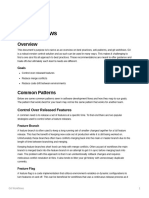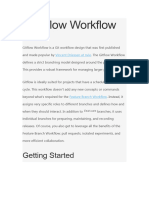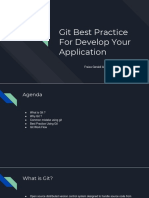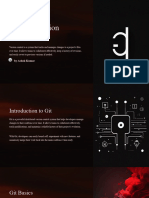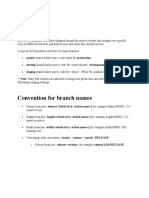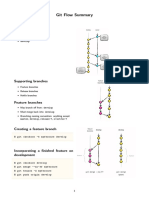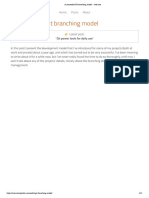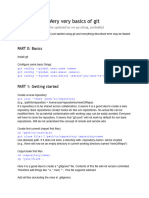0% found this document useful (0 votes)
40 views1 pageTypes of Git Workflows: Basic Workflow
There are two main types of Git workflows: the basic workflow and the feature branch workflow. The basic workflow involves a central repository where each developer clones the repo, makes local commits, and pushes changes. The feature branch workflow uses branches to independently develop new features, with each branch then being merged to the master branch once testing is complete. Larger teams may employ feature branches along with merge requests and push permissions, where junior developers create requests for senior reviewers to check code before branches are merged to the main repository.
Uploaded by
Fermin MorenoCopyright
© © All Rights Reserved
We take content rights seriously. If you suspect this is your content, claim it here.
Available Formats
Download as PDF, TXT or read online on Scribd
0% found this document useful (0 votes)
40 views1 pageTypes of Git Workflows: Basic Workflow
There are two main types of Git workflows: the basic workflow and the feature branch workflow. The basic workflow involves a central repository where each developer clones the repo, makes local commits, and pushes changes. The feature branch workflow uses branches to independently develop new features, with each branch then being merged to the master branch once testing is complete. Larger teams may employ feature branches along with merge requests and push permissions, where junior developers create requests for senior reviewers to check code before branches are merged to the main repository.
Uploaded by
Fermin MorenoCopyright
© © All Rights Reserved
We take content rights seriously. If you suspect this is your content, claim it here.
Available Formats
Download as PDF, TXT or read online on Scribd
/ 1



